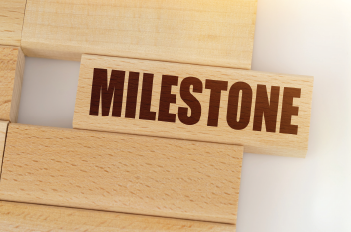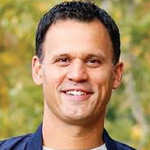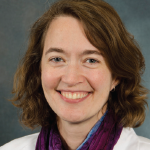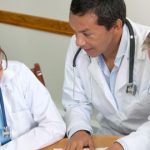
SkazovD / shutterstock.com
The past several decades have seen the transition of medical training from a hierarchical, teacher-driven model to a learner-centered approach that emphasizes competency-based medical education (CBME).
CBME refers to several aspects of education, including: 1) flexible, lifelong learning; 2) emphasis on knowledge and skills rather than regurgitation of facts; and 3) formative rather than summative assessments, with learners asked to apply knowledge to clinical situations frequently encountered in real-life medical practice. The purpose of formative assessment is to monitor student learning and provide ongoing feedback to staff and students. The goal of summative assessment is to evaluate student learning at the end of an instructional unit.
In 2013, the Accreditation Council for Graduate Medical Education (ACGME) helped buttress CBME efforts by introducing the Next Accreditation System, in which seven specialties—including internal medicine—developed reporting milestones.1
As Andolsek and colleagues recently described in the Journal of Graduate Medical Education, milestones refer to “… narrative descriptors of a resident or fellow’s developmental progression along an expected trajectory within each competency domain, typically from novice to aspirational levels.”2
Milestones are an important part of the evolution of medical training because they support the core tenets of adult learning theory, which include self-directed learning and reflection on life experiences and progress on the basis of explicitly stated goals and objectives.
Milestones help emphasize the application of knowledge toward the achievement of tangible outcomes, such as the development of leadership and communication skills. Such skills are increasingly important to the modern practice of medicine. In today’s climate, teams are often interprofessional, good communication is key to helping patients navigate the complex medical system, and the ability to work on quality improvement in medical care delivery is an essential area of proficiency for trainees and faculty members alike.
The inaugural ACGME milestones were independently developed by each medical specialty, which resulted in more than 150 milestone sets.3 With so many disparate milestones, wide variability existed in how each learning domain was characterized. Professionals working with the ACGME felt that standardizing milestones across competency domains would lead to greater consistency and allow educators to collaborate as a learning community.
Thus, the Milestones 2.0 initiative was launched, with the goal of creating harmonized milestones.4
These harmonized milestones were developed by content experts, training program directors and faculty members across several medical specialties, with core competencies in the categories of systems-based practice, professionalism, interpersonal and communication skills, and practice-based learning and improvement.
Specificity Preferred
A needs assessment survey administered to internal medicine subspecialty program directors demonstrated that 85% preferred subspecialty-specific milestones as opposed to one set of milestones to be used for all divisions within internal medicine. This preference was also apparent among 78% of rheumatology fellowship program directors surveyed.5 Thus, ACGME, the American Board of Internal Medicine (ABIM) and the ACR joined together to create the Rheumatology Milestones 2.0 project, in addition to the harmonized milestones.
The goal of this work was to provide a practical, universal framework for the assessment and evaluation of rheumatology fellows and to create revised milestone language that allows for targeted, helpful feedback for trainees.
Key elements of the Rheumatology Milestones 2.0 project have been transparency of the process and involvement of individuals with diverse perspectives. Within the ACGME Rheumatology Milestones 2.0 Working Group were academic rheumatologists, a community practice rheumatologist, a rheumatology fellow in training and a member of the public who has a rheumatic disease and was able to provide a patient’s perspective. Several members of the working group were on the ACR Committee on Rheumatology Training and Workforce Issues, involved in the ACR Rheumatology Research Foundation Clinician Scholar Educator program, and on the ABIM Rheumatology Specialty Board.
The group was overseen by Laura Edgar, EdD, CAE, who serves as the ACGME vice president for milestones development and has extensive experience in medical education research and competency-based medical education. This diversity of positions and experiences allowed for robust discussion of how the milestones could best encompass all important elements of rheumatology training and patient care.
Beyond the composition of the working group, another great strength of the project has been the period of open public commentary that has allowed all stakeholders—clinicians, researchers, educators, patients and others—to express their thoughts. The notes collected from public commentary were invaluable and helped shape and modify the final version of Rheumatology Milestones 2.0.
The milestones include rheumatology-specific patient care and medical knowledge milestones. This greater specificity of milestones for rheumatology trainees is likely to make assessments more relevant and helpful to fellows and will truly highlight important strengths and areas for improvement.
The majority of the new milestones are versed in the language of domains rather than actions. This means that, as opposed to narrowly focusing on specific skills that may speak only to a fellow’s ability to perform an individual task, the new milestones reflect broader competencies that can translate to many different clinical settings and situations.
The 2.0 version of the Rheumatology Milestones eliminated the term critical deficiency, which was used to describe level 1 in the former internal medicine subspecialty reporting milestones, replacing it with the term novice for a level 1 learner and a subsequent reduction in negative connotations associated with the level. Thus, educators may feel more comfortable assessing a fellow at this level.
An entirely new feature of the revised rheumatology milestones is the creation of a Supplemental Guide, which includes examples of clinical environments and situations that depict each learner level for each milestone (https://www.acgme.org/Portals/0/PDFs/Milestones/RheumatologySupplementalGuide.pdf). Notes with respect to the development and intended use of each milestone shed light on the thinking of the Rheumatology Milestones 2.0 Working Group. References to tools and additional resources that may be helpful to rheumatology program directors, faculty and Clinical Competency Committees are also included.
Marcy Bolster, MD, associate professor of medicine at Harvard Medical School and director of the Rheumatology Fellowship Training Program in the Division of Rheumatology, Allergy, and Immunology at Massachusetts General Hospital, Boston, was a member of the Rheumatology Milestones 2.0 Working Group and nicely summarizes the positive outcomes of this work: “The Rheumatology Milestones 2.0 project offers a valuable, rheumatology-specific mechanism for assessing fellow performance, providing actionable features by which to depict a fellow’s progress in training,” she says. “The stages of learning and professional development are delineated in clear language with a succinct presentation, and there is a resource, the Supplemental Guide, to provide examples and context for each of the Milestone performance levels.”
Looking Ahead

Dr. Bolster
Although Rheumatology Milestones 2.0 holds great potential, it is not yet demonstrably clear these milestones will improve outcomes with respect to ease of use for faculty. It also remains to be seen if the milestones will yield improved quality of training for fellows or improved outcomes for patients.
The conceptual framework underpinning the development and content of Rheumatology Milestones 2.0 seems promising, but will require ongoing surveys and focus groups to evaluate user friendliness. It may also be helpful to study whether the milestones can be used to discriminate between different fellows’ skill levels, strengths and weaknesses more accurately than the previous reporting milestones.
Of great importance in the future will be the ways in which training programs can best implement Rheumatology Milestones 2.0. Yaghmour and colleagues studied milestone implementation in 16 training programs across four medical specialties to better understand this process. These researchers found three stages of milestone implementation:
- A resource-intensive early stage;
- An increasingly efficient transition stage; and
- A final stage for fine-tuning.
In this study, programs that created tailored assessment forms reflecting the expertise and clinical observation opportunities of raters reported improved completion and accuracy compared with programs that did not tailor forms in this way.
Moreover, programs that frequently checked in with faculty and Clinical Competency Committees reported increased faculty engagement.
The manner in which feedback was given to trainees also evolved on the basis of the milestone implementation stage, and the specifics of the feedback processes played a large role in shaping perceptions among residents. For example, it was not until the later stage of program implementation that feedback in these training programs was consistent, frequent, objective and filled with actionable items.
The researchers note that using the milestones to help trainees understand the context for feedback is an important way to help them understand their strengths and weaknesses and take ownership of their own professional development.6
Since the practice of medicine after residency and fellowship training relies so heavily on self-directed learning and improvement, a key goal of the milestones is to assist trainees in developing competencies that will serve them well throughout their careers. This is somewhat akin to the “teach a person to fish” rather than “give a person a fish” model, and many practicing rheumatologists recognize the importance of this distinction.
If rheumatology fellows can leave their training programs with the ability to recognize their areas of competence, as well as areas for improvement, they may be ready to accept ongoing growth and maturation over the course of a career. Keeping up to date on the medical literature, being cognizant of the various forms of bias that can sometimes hinder clinical reasoning, being an effective communicator with patients and colleagues, and understanding the ethical principles that should guide patient care are but a few of the complex issues that rheumatologists face even decades into practice. These new milestones seek to allow trainees to graduate their training programs ready to face these challenges head-on from their first day of independent practice.
The new milestones represent a potentially transformative step toward the future of medical training and education. Dr. Bolster expresses enthusiasm about the future and notes, “I look forward to implementation of the Rheumatology Milestones 2.0 by rheumatology fellowship training programs in July 2021 and to obtaining longitudinal feedback, because further modifications may be important to align with the needs and goals of our training programs.”
 Jason Liebowitz, MD, completed his fellowship in rheumatology at Johns Hopkins University, Baltimore, where he also earned his medical degree. He is currently in practice with Skylands Medical Group, N.J.
Jason Liebowitz, MD, completed his fellowship in rheumatology at Johns Hopkins University, Baltimore, where he also earned his medical degree. He is currently in practice with Skylands Medical Group, N.J.
Program Directors Discuss the New Milestones
By Renée Bacher

Dr. Kolfenbach
At the ACR Division & Program Directors Conference in March, rheumatologists Jason Kolfenbach, MD, associate professor of medicine and ophthalmology and rheumatology fellowship program director at the University of Colorado, Denver, and Beth Marston, MD, associate professor of medicine and pediatrics and rheumatology program director at the University of Rochester School of Medicine, New York, discussed the new rheumatology-specific milestones. Both physicians were members of the ACR and ACGME Milestones 2.0 Working Group.
“A level 1 in the history-gathering milestone would be gathering a basic rheumatic history, and we would expect a senior resident or a brand-new rheumatology fellow to be able to do that,” said Dr. Marston. “With experience, they would move through to level 2, integrating this history with a more comprehensive history, and then further advancing through these developmental milestones.”

Dr. Marston
Dr. Marston added that there’s a new milestone just for therapeutics to include immunomodulatory prescriptions and management—a crucial skill for a rheumatology fellow to develop.
“Each line of milestone narratives within a sub-competency should follow a clear progression on the path to the level of independent practice (i.e., level 4),” said Dr. Kolfenbach.
References
- Nasca TJ, Philibert I, Brigham T, Flynn TC. The next GME accreditation system—Rationale and benefits. N Engl J Med. 2012 Mar 15;366(11):1051–1056.
- Andolsek KM, Jones MD Jr., Ibrahim H, Edgar L. Introduction to the Milestones 2.0: Assessment, Implementation, and Clinical Competency Committees Supplement. J Grad Med Educ. 2021 Apr;13(2 Suppl):1–4.
- Day SH, Nasca TJ. ACGME International: The first 10 years. J Grad Med Educ. 2019 Aug;11(4 Suppl):5–9.
- Edgar L, Roberts S, Holmboe E. Milestones 2.0: A step forward. J Grad Med Educ. 2018 Jun;10(3):367–369.
- Green ML, Aagaard EM, Caverzagie KJ, et al. Charting the road to competence: Developmental milestones for internal medicine residency training. J Grad Med Educ. 2009 Sep;1(1):5–20.
- Yaghmour NA, Poulin LJ, Bernabeo EC, et al. Stages of milestones implementation: A template analysis of 16 programs across 4 specialties. J Grad Med Educ. 2021 Apr;13(2 Suppl):14–44.



